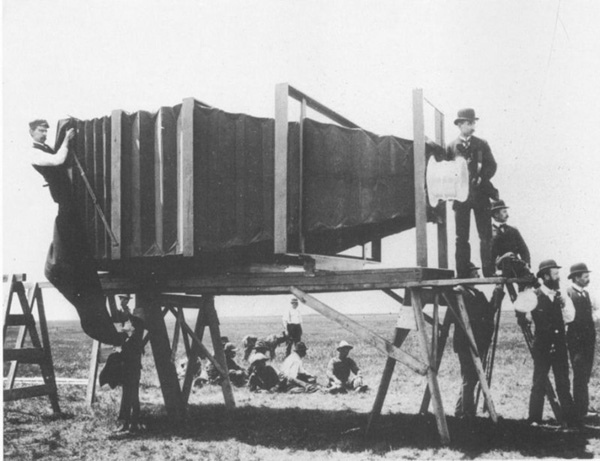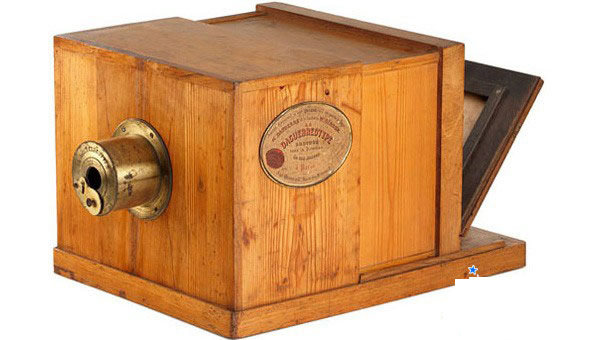The birth of the camera
Since the end of the 11th century, humans have used a rudimentary camera called "darkroom". It allows you to print images of images, then through some processing we will get the correct image of the subject.
The birth history of the camera
The first camera has been shaped since the 11th century, and the cameras are now considered a development from the Latin ' camera obscura' obscura meaning ' dark chamber' . These 'dark chambers ' are a device dating back to the ancient times of ancient Chinese and Greeks , using a grandfather or a pinhole to project the upside down landscape on a surface.

In 1568, Danielo Barbaro invented the camera that could change the diameter to increase the sharpness of the image. In 1802, Tomas Erdward and Gamphri Devid by printing contact produced images on a special paper (however, these photos were not durable).
In 1816, a man named Zozep Nips invented a box-style camera that allowed a negative image to be obtained. In 1835, William Tabot was the first person to produce positive plates from negative images and also obtained very sharp images.
In 1839, Luis Dage published the invention of a process of positioning images on silver pieces . Over time, many people contributed ideas and effort to perfecting the camera.

Finally, in 1888 it was seen on the market that there were modern cameras of Eastman Dry Play and Film. This device pre-loaded film 6cm wide enough to capture 100 images. After shooting all the movies, the camera is returned . to the company to get the film out and print it! Then it is reloaded to the movie and paid to the customer.
The digital photo was taken first in December 1975 by the machine of East man Kodak . It uses a CCD sensor made by Fairchild Semiconductor in 1973. It weighs 3.6 Kg, takes a 10,000-Pixela black-and-white image and writes it to tape. Taking each photo takes 23 seconds.
The first digital camera that looks like a camera is usually Sony Magica (Magnetic Video Camera) made in 1981.

It wasn't until 1984 that Canon introduced the Canon RC-701 , an Analogue electronic camera,
The first true digital camera was Fuji DS-1P in 1988, the image was recorded on a 16MB memory card (this memory must be fed by battery). The first digital camera to be sold is the Kodak DSC-100 in 1991. It has a 1.3MP resolution and costs $ 13,000. The first digital camera with liquid crystal display was Casio QC-10 in 1995. The first digital camera used Compact Flash was Kodak DC-25 in 1996.
The first popular digital camera reached a 1MP resolution in 1997. The first digital camera could be recorded as Ricoh RCD-1 in 1995. In 1999, Nikon introduced Nikon D1, camera. The first DS LR with 2.74MP resolution, priced under $ 6,000 (acceptable price for professional photographers and money-rich photographers). This camera uses Nikon F-mount standard lenses like film cameras. In 2003, Canon released the Canon Digital Rebel, also known as the 300D, which had a resolution of 6MP and was the first DSLR to cost under $ 1,000.

And to this day, you can see a wide range of cameras with improved design and functionality. At the same time, with the introduction of smartphones , taking photos becomes easier than ever. However, for true photography enthusiasts, nothing can replace the real camera. Thanks to that technology, camera production has never been obsolete.
- The 200-gauge radar camera technology is as small as a fingernail
- Scientists Develop Flexible Camera
- This lensless camera is the future of photography
- Camera based on insect eyes
- Camera captures the smell
- How does a thermal camera work?
- Bubble camera
- The camera can look bent over the corner of the wall
- Revealing the world's fastest camera shooting ... 10,000 billion frames per second
- Fire detection camera
- Future camera sensors will not need lenses
- Poland: Developed a super-X-ray camera
 Daily use inventions come from universities
Daily use inventions come from universities Special weight loss device helps prevent appetite
Special weight loss device helps prevent appetite 8 inventors were killed by their own inventions
8 inventors were killed by their own inventions Iran invented a motor car powered by water
Iran invented a motor car powered by water Camera takes a photo that lasts 1,000 years
Camera takes a photo that lasts 1,000 years  AI camera shoots without lens
AI camera shoots without lens  Sand-sized image sensor sets world record
Sand-sized image sensor sets world record  The journey to transport the world's largest camera to the top of the mountain
The journey to transport the world's largest camera to the top of the mountain  The world's largest digital camera helps uncover the secrets of dark matter
The world's largest digital camera helps uncover the secrets of dark matter  Canadian engineer creates the fastest camera in the world
Canadian engineer creates the fastest camera in the world 